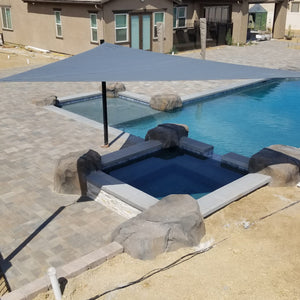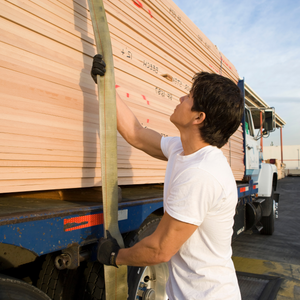
Different Types of Lumber Tarps and When to Use Them
Lumber tarps are essential tools in the trucking and transportation industry, designed to protect cargo like wood, steel, and other materials from the elements. Choosing the right type of lumber tarp for specific applications ensures the safety and integrity of your cargo during transit. In this guide, we’ll explore the different types of lumber tarps and when to use each one.
What Are Lumber Tarps?
Lumber tarps are large, durable covers made of materials like vinyl, designed to shield loads from rain, snow, and UV damage. They are commonly used in flatbed trucking to protect loads of lumber, steel, and other oversized materials. Using the right tarp is crucial for ensuring that your cargo arrives in perfect condition.
3-Piece Lumber Tarps
When to Use 3-Piece Lumber Tarps
3-piece lumber tarps consist of two side pieces and one center piece, allowing for better customization and coverage. These tarps are ideal when covering irregularly shaped loads, such as mixed cargo or tall stacks of lumber. They are easy to adjust and more versatile than single-piece tarps.
Benefits of 3-Piece Tarps
- Flexibility in covering different load sizes
- Easier to handle and maneuver
- Reduces excess material, minimizing flapping and wear
Heavy-Duty Lumber Tarps
When to Use Heavy-Duty Lumber Tarps
Heavy-duty lumber tarps are constructed from thicker, more durable vinyl material, making them perfect for protecting cargo in extreme weather conditions. If you’re hauling sensitive materials that must be kept dry at all costs, these tarps are the way to go.
Benefits of Heavy-Duty Tarps
- Superior resistance to tears and abrasions
- Ideal for long-haul trucking in harsh environments
- Offers added protection for valuable cargo
Lightweight Lumber Tarps
When to Use Lightweight Lumber Tarps
Lightweight tarps are designed for ease of use and quick deployment. These tarps are a good option for shorter trips where cargo doesn’t need heavy-duty protection, or for drivers looking to reduce their handling time. Despite being lighter, they still provide reliable coverage for most loads.
Benefits of Lightweight Tarps
- Easier to maneuver and faster to secure
- Suitable for less harsh weather conditions
- Reduces strain on the driver, making them perfect for frequent use
Steel Tarps vs. Lumber Tarps
When to Use Steel Tarps Instead of Lumber Tarps
While lumber tarps are specifically designed for wood and other large materials, steel tarps are optimized for lower-profile loads. They are typically smaller and don’t have the end flaps that lumber tarps have, which are necessary for taller loads like wood stacks. Use steel tarps when transporting metal sheets, pipes, and other smaller loads that require less coverage.
Benefits of Steel Tarps
- Lightweight and easier to handle than lumber tarps
- Better suited for shorter or less bulky loads
- Provides an efficient option for cargo that doesn’t need full lumber tarp protection
Custom Lumber Tarps
When to Use Custom Lumber Tarps
Custom lumber tarps are built to suit specific load requirements, offering unique dimensions or added features like extra grommets, flaps, or reinforcements. These tarps are perfect for oversized or irregular loads that cannot be effectively covered by standard tarps.
Benefits of Custom Lumber Tarps
- Tailored to fit unusual load sizes and shapes
- Can include added protection features
- Provides the best coverage for complex hauls
Choosing the Right Tarp for Your Load
Understanding when to use each type of lumber tarp comes down to the nature of your cargo, the distance of the haul, and the weather conditions you may encounter. For short trips in mild weather, lightweight tarps may suffice, while long hauls through harsh weather require heavy-duty options. Additionally, 3-piece tarps offer flexibility for mixed loads, and custom tarps are perfect for irregular cargo.
Final Thoughts
Lumber tarps come in many variations, each suited to different types of loads and conditions. By selecting the right tarp for the job, you’ll ensure that your cargo remains safe and secure during transit, no matter the challenges on the road.



